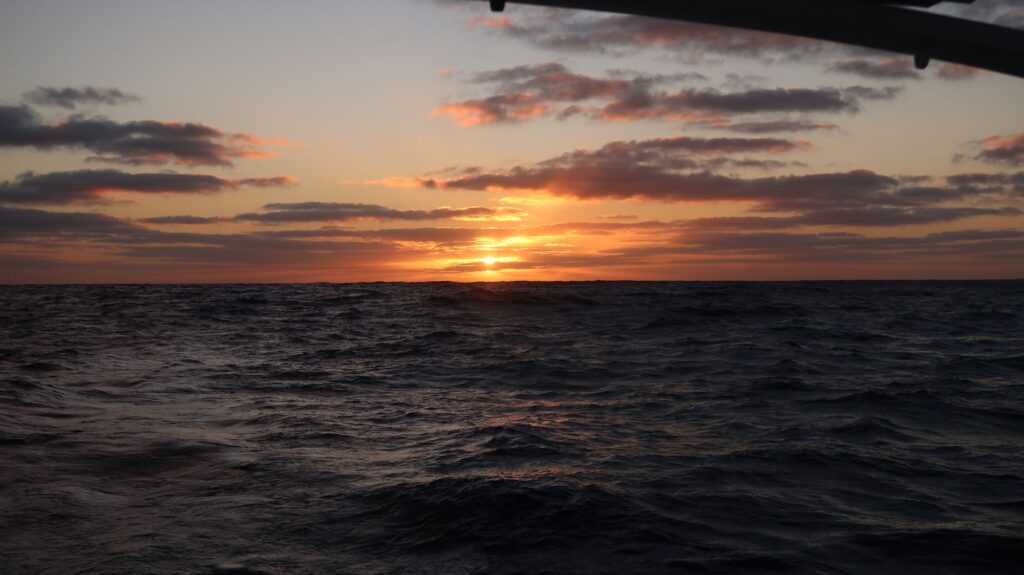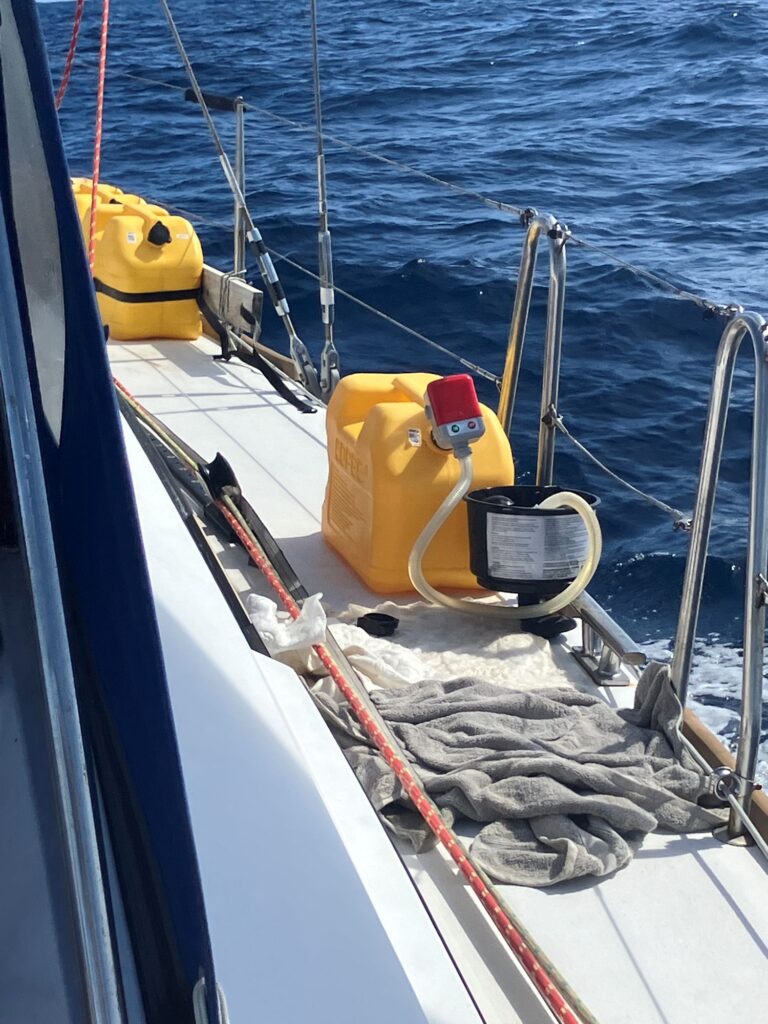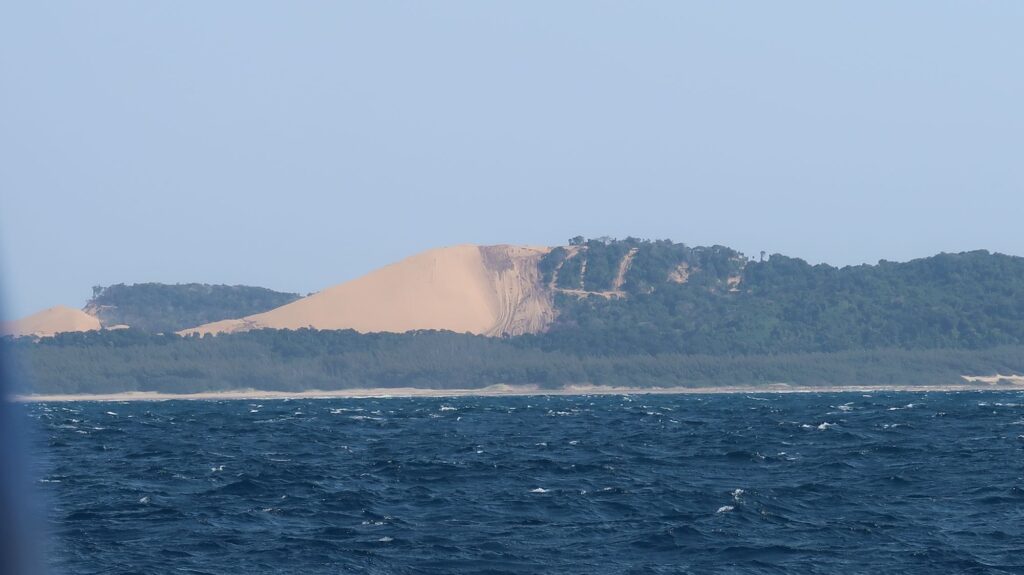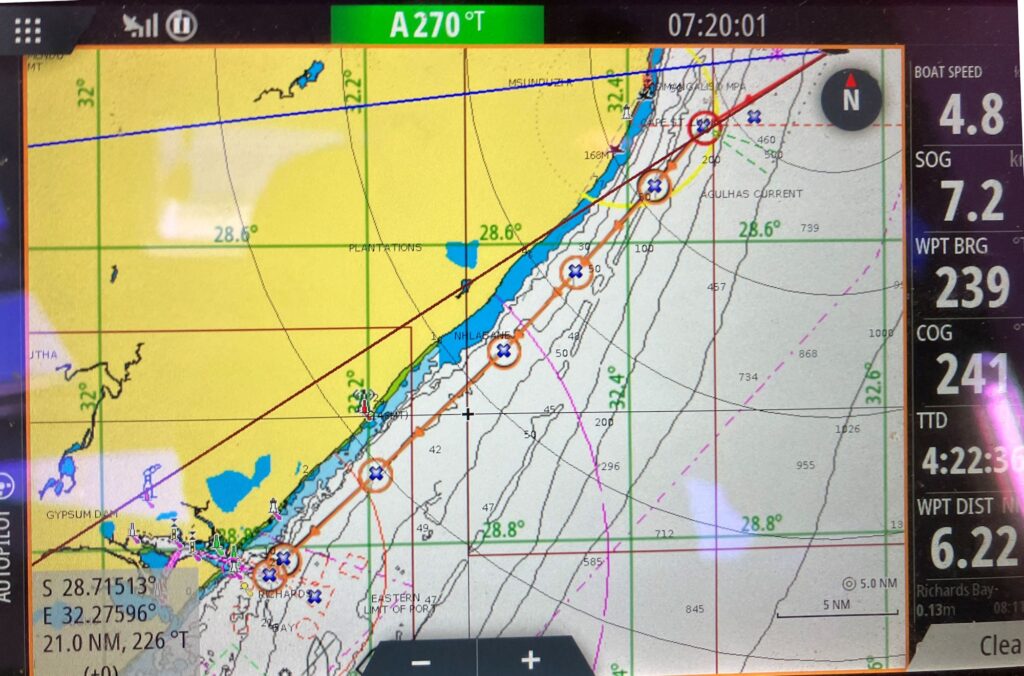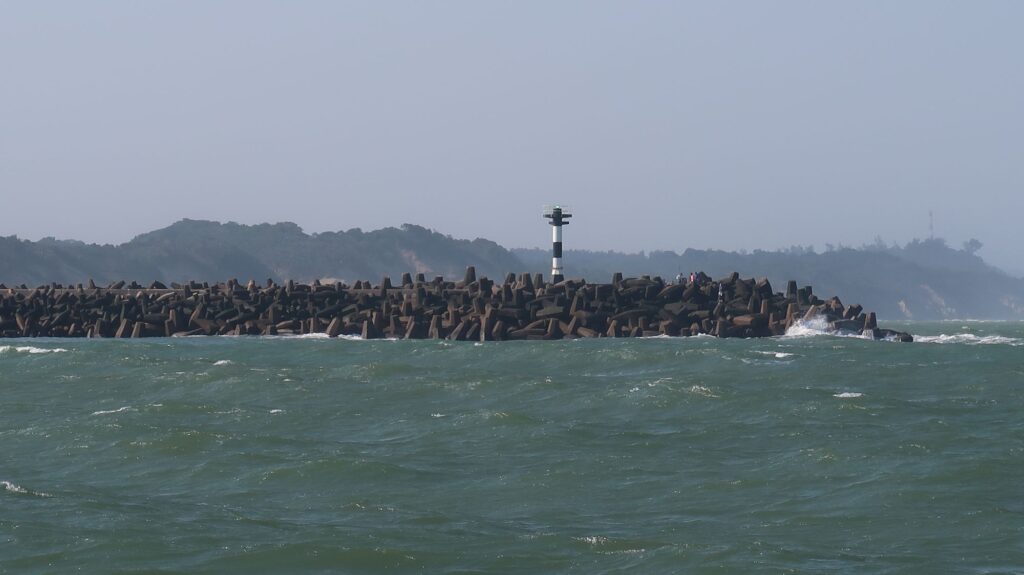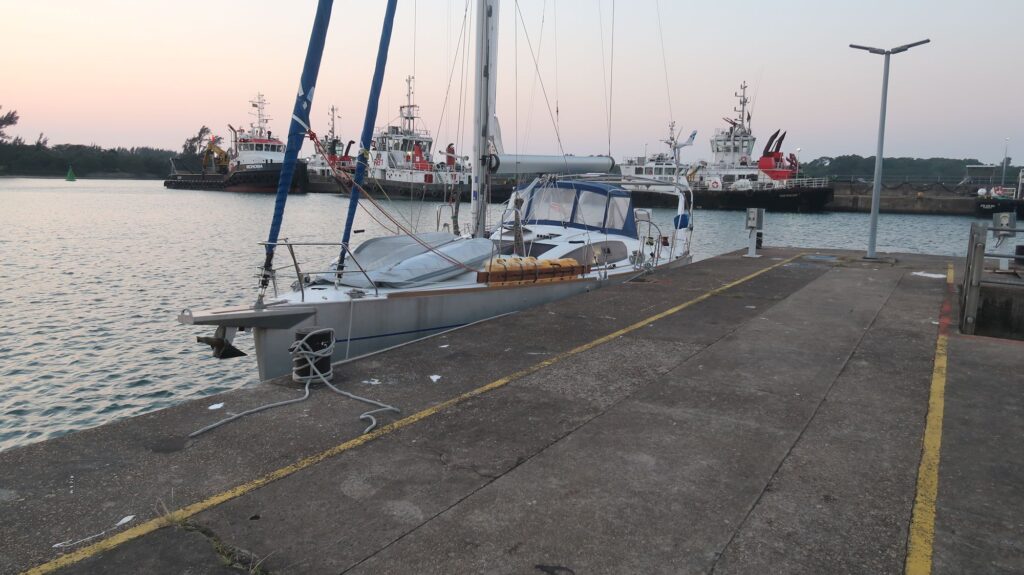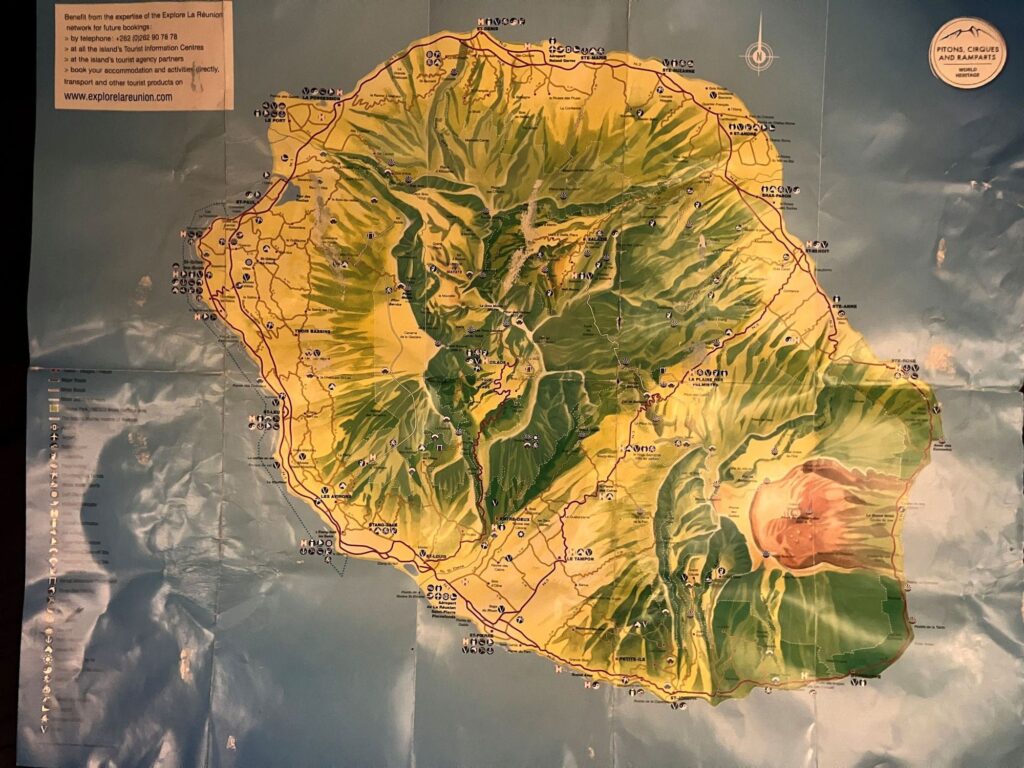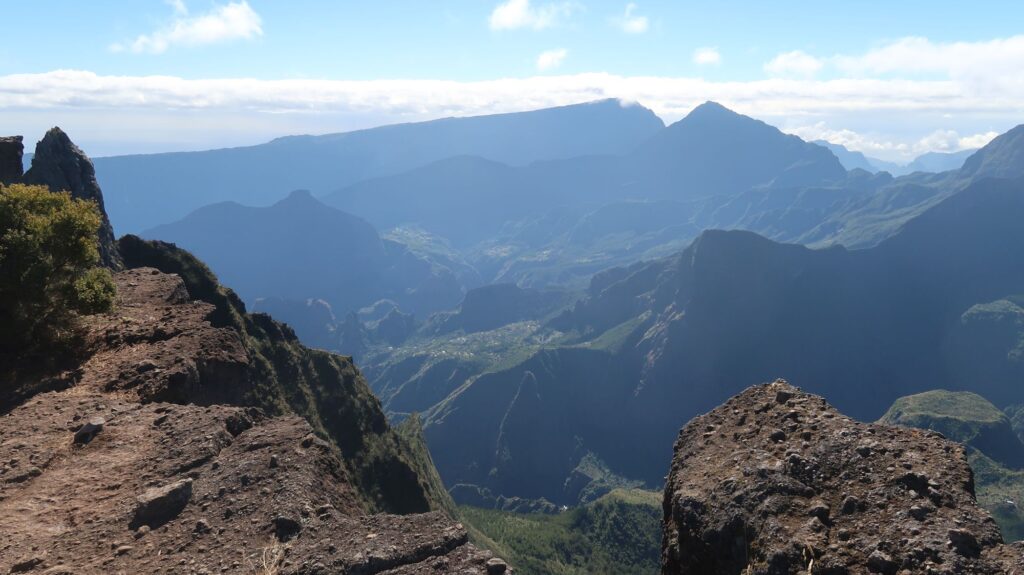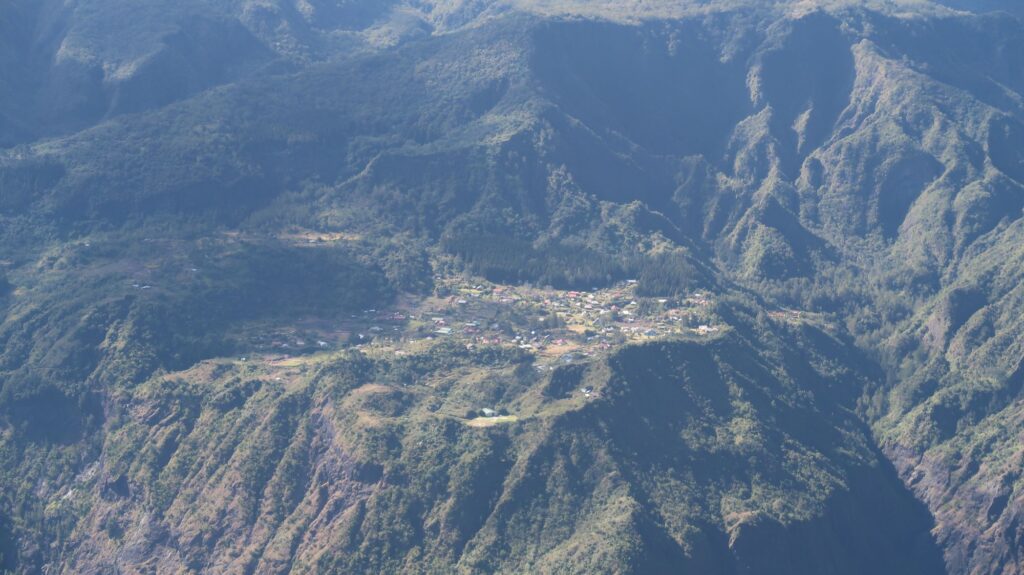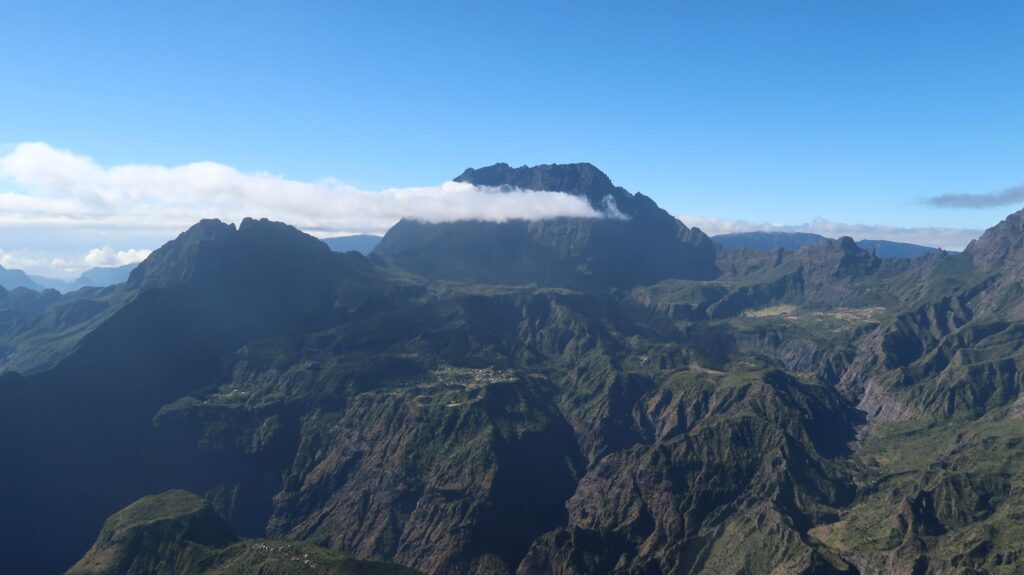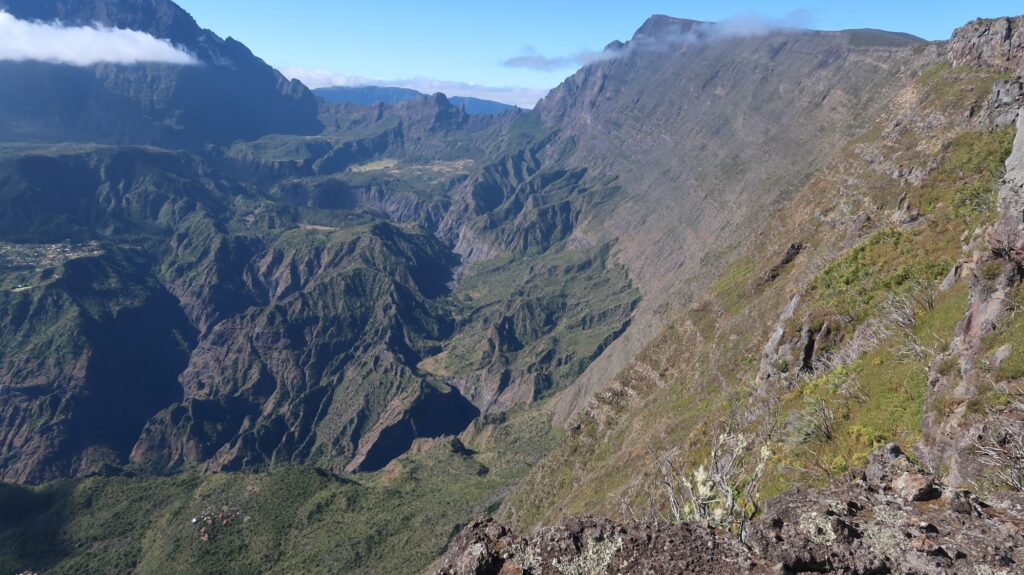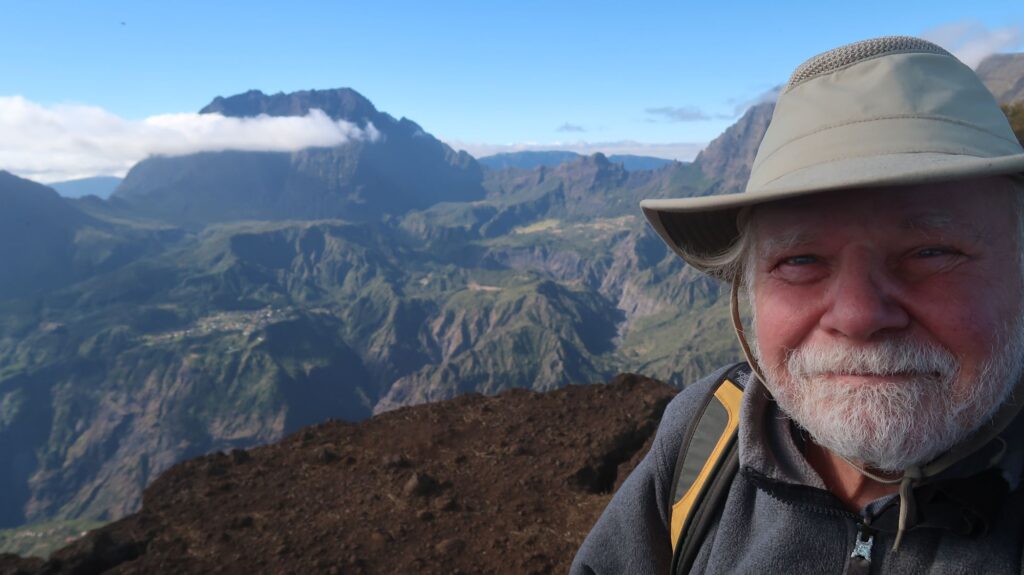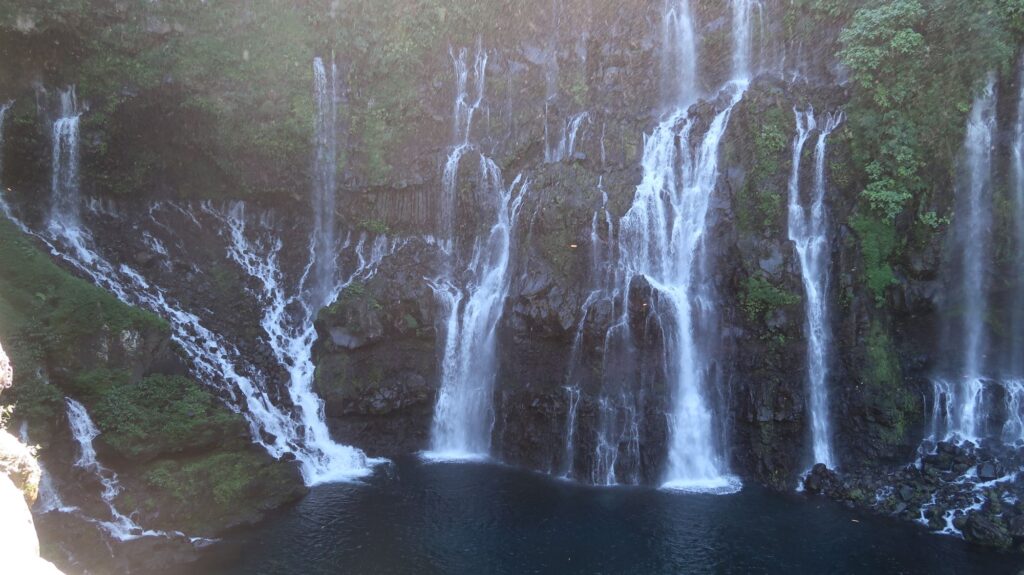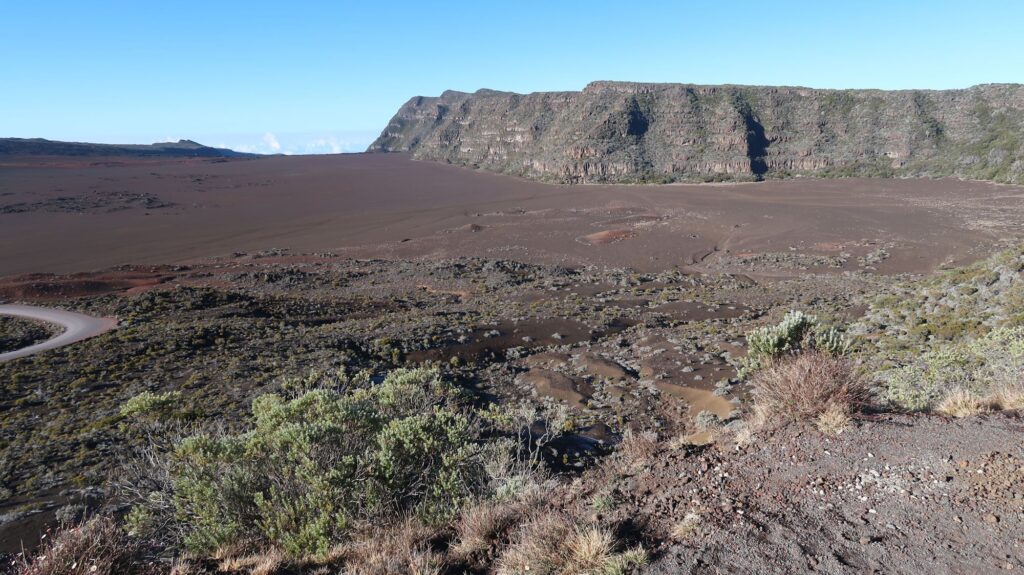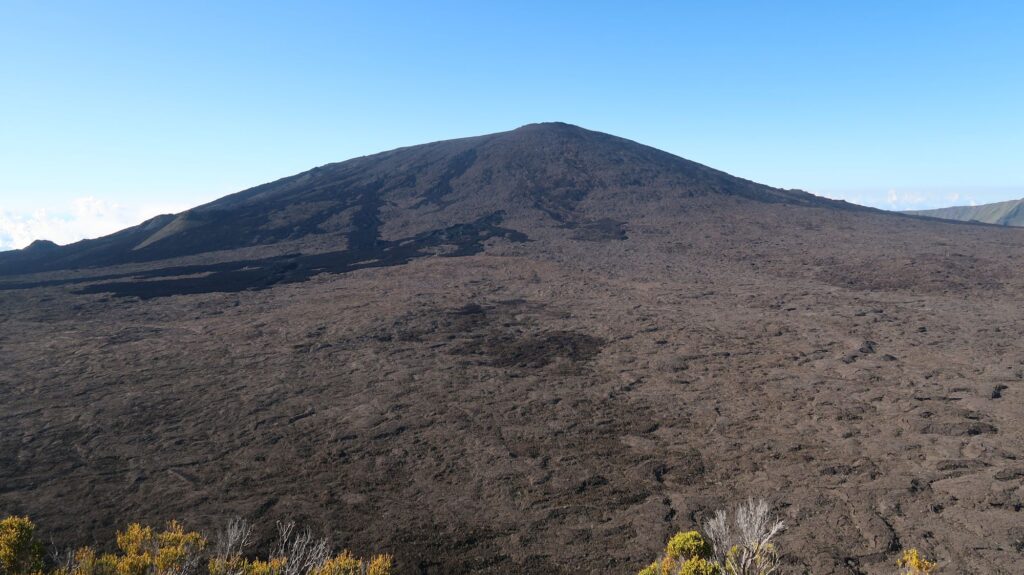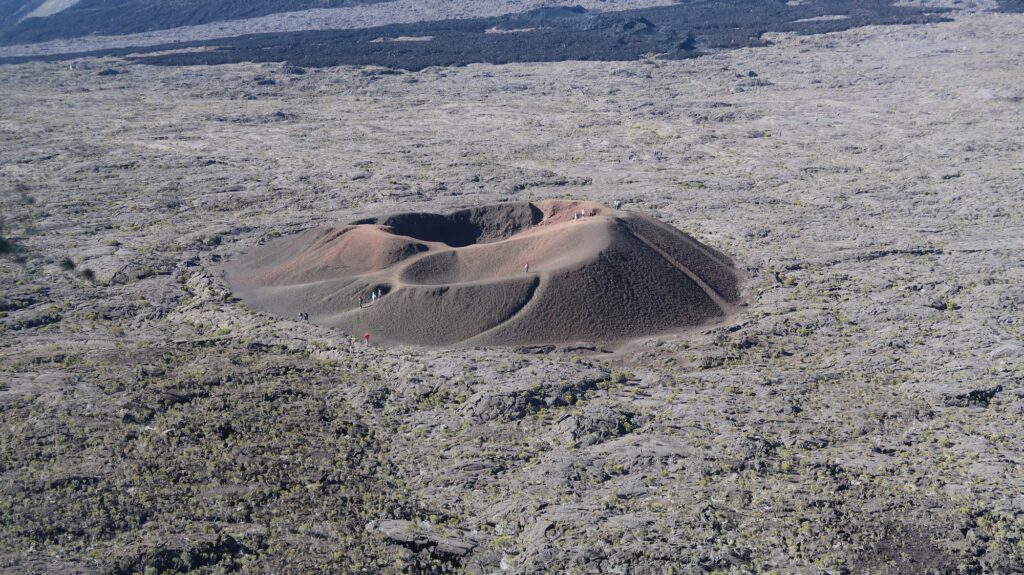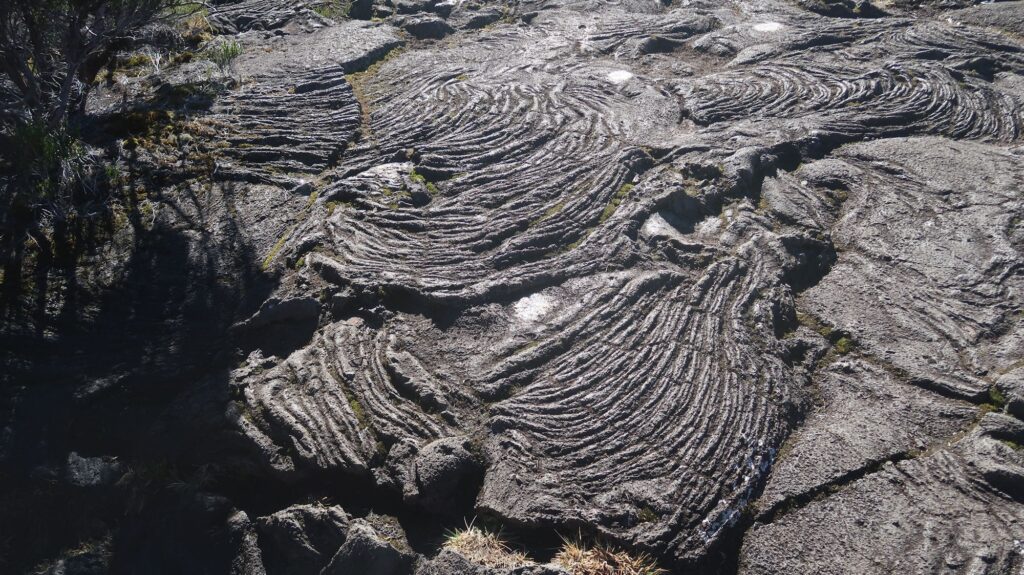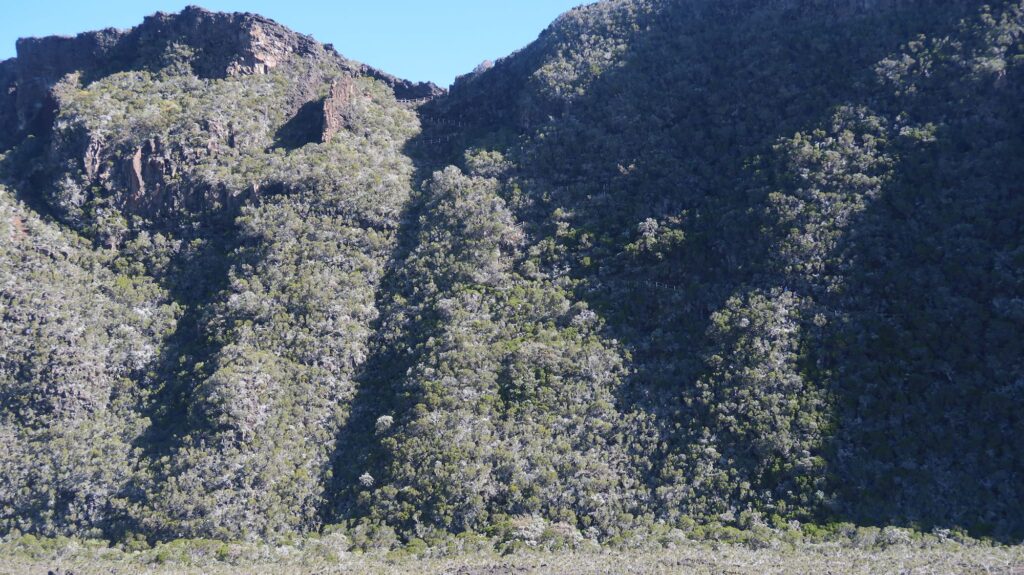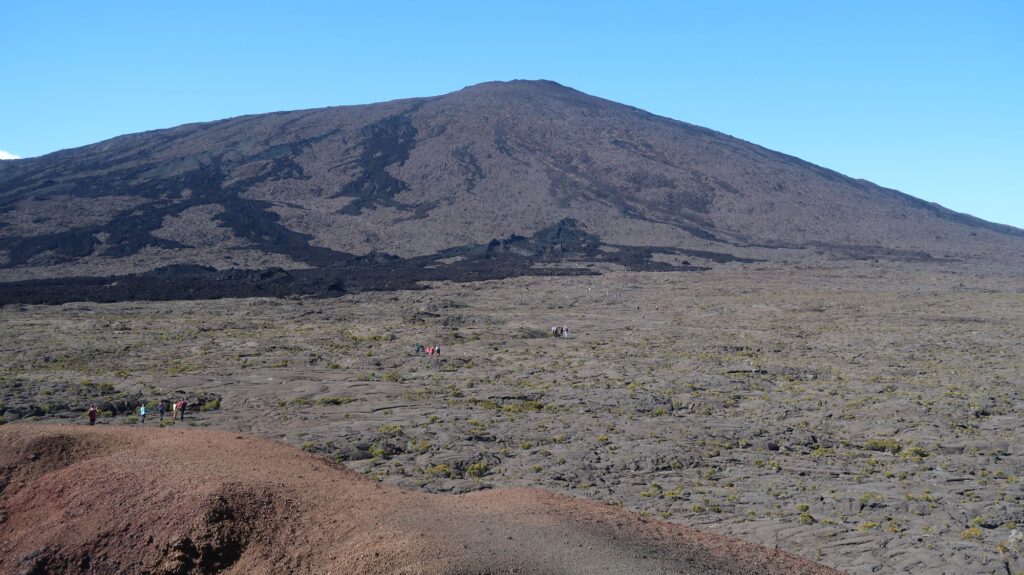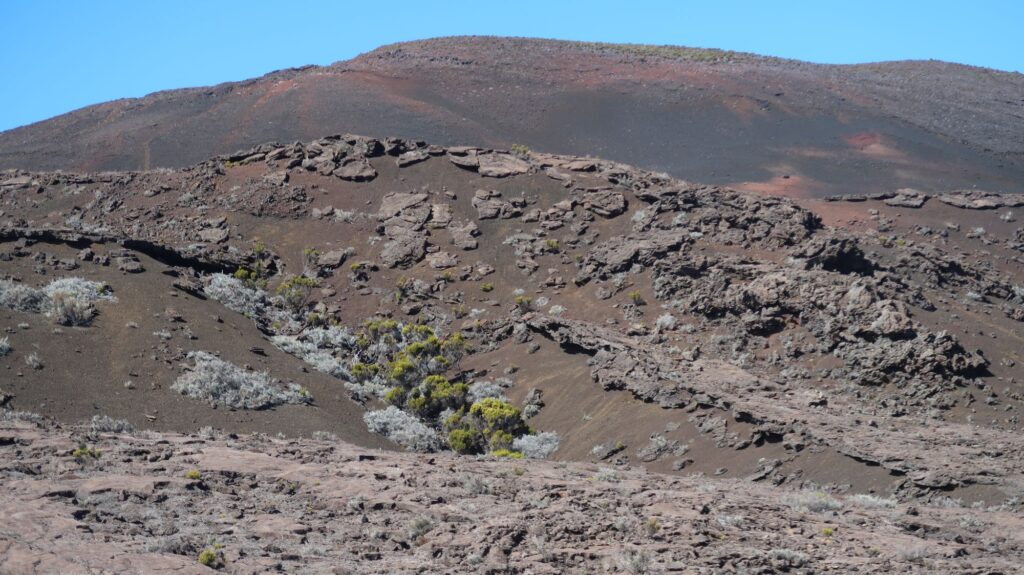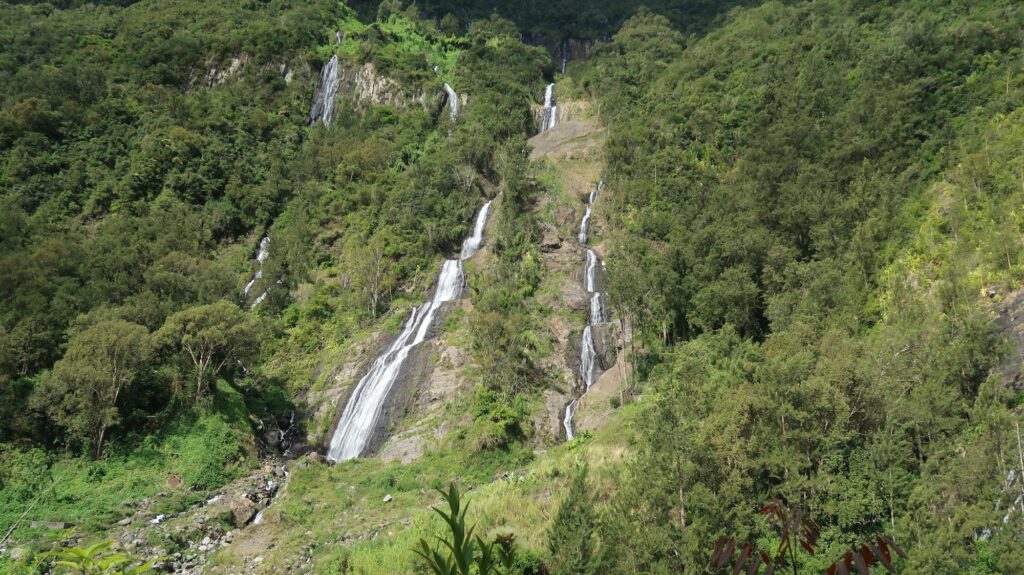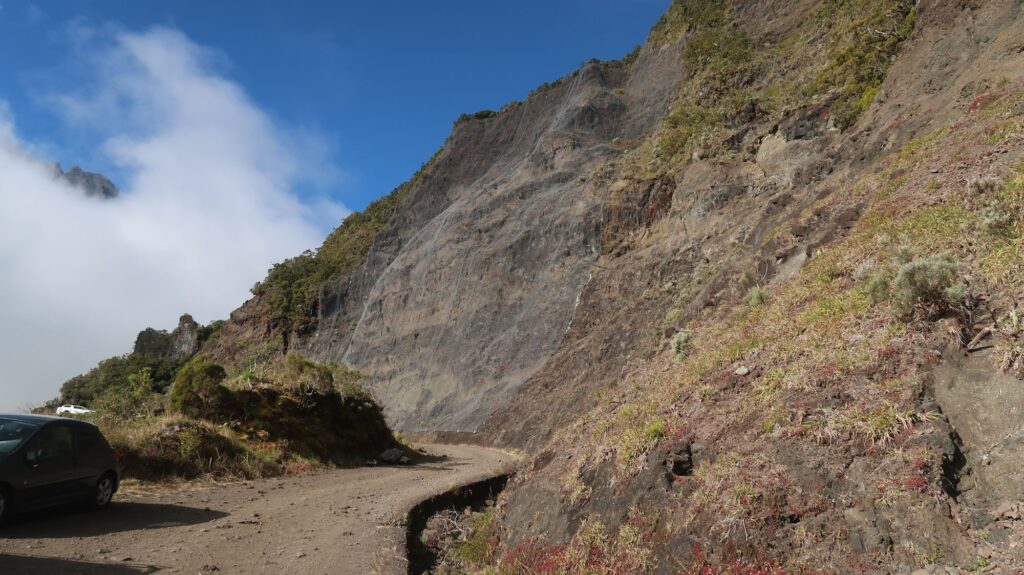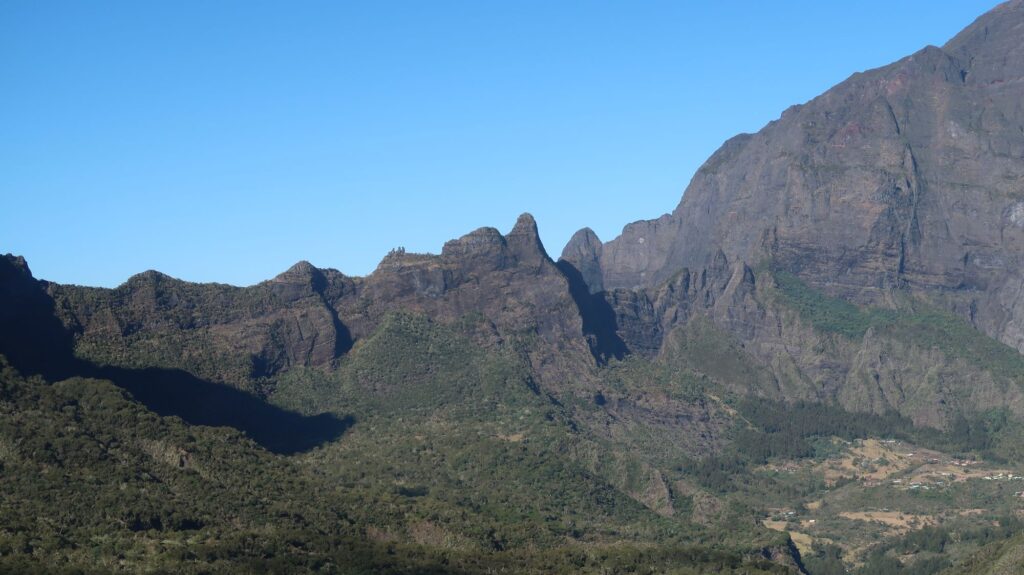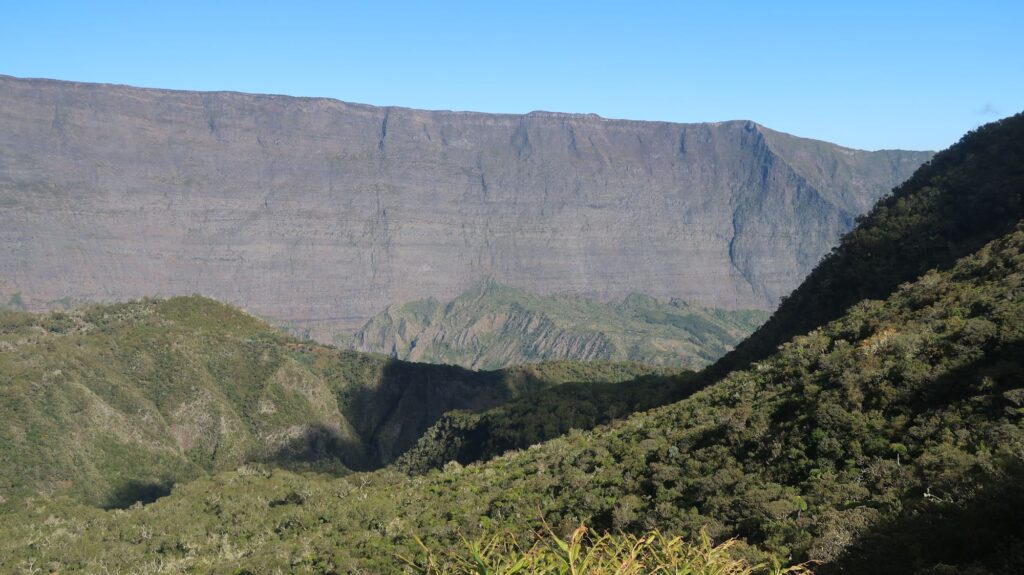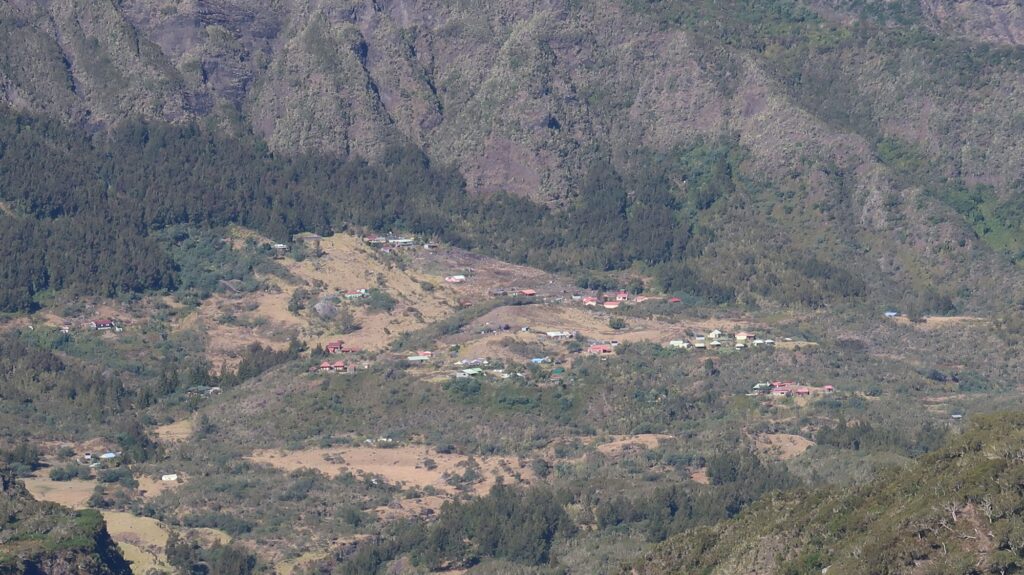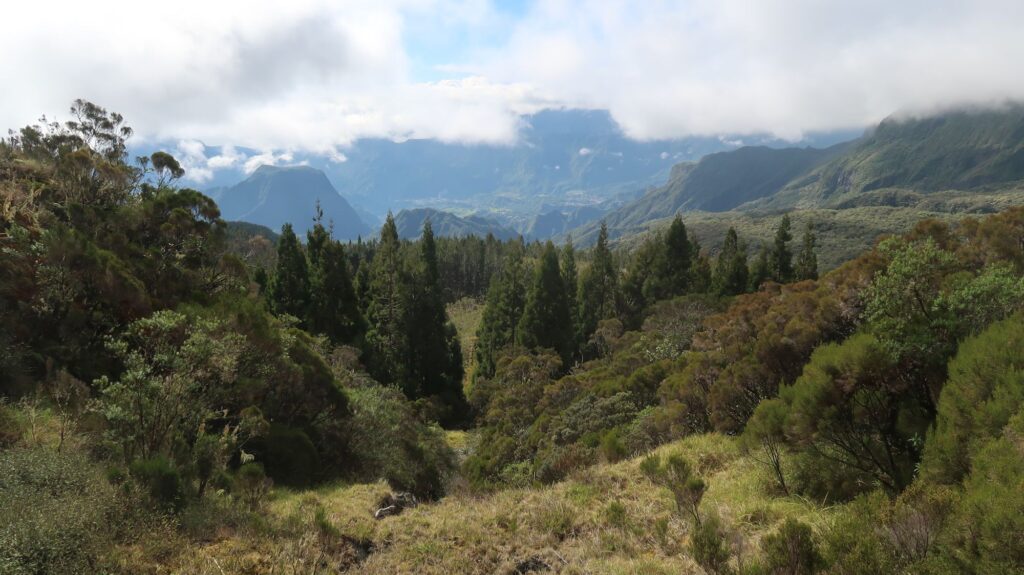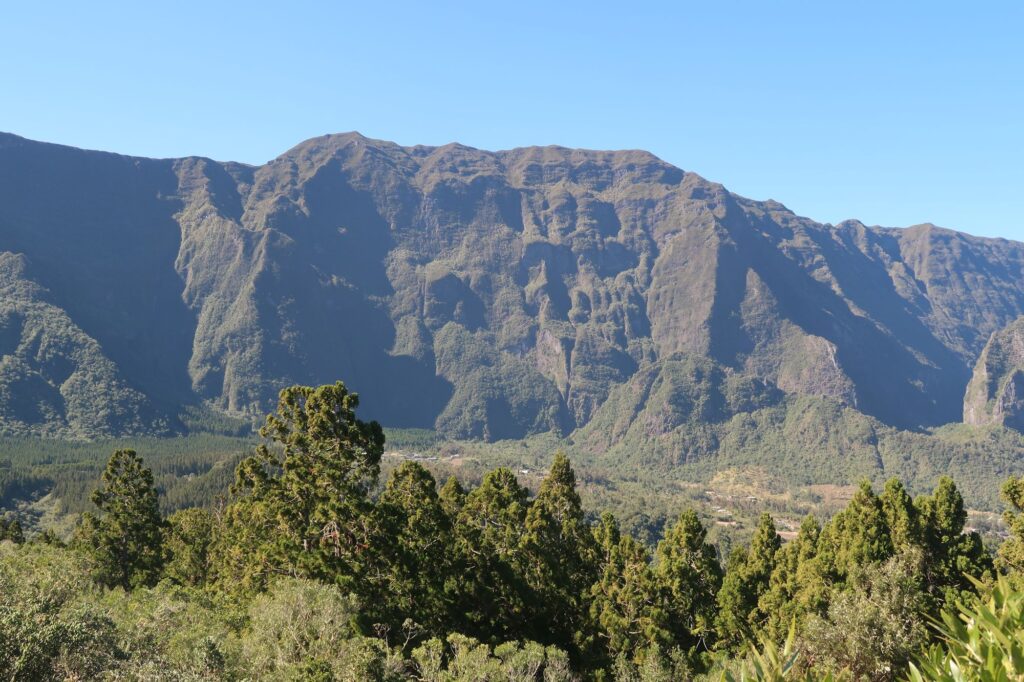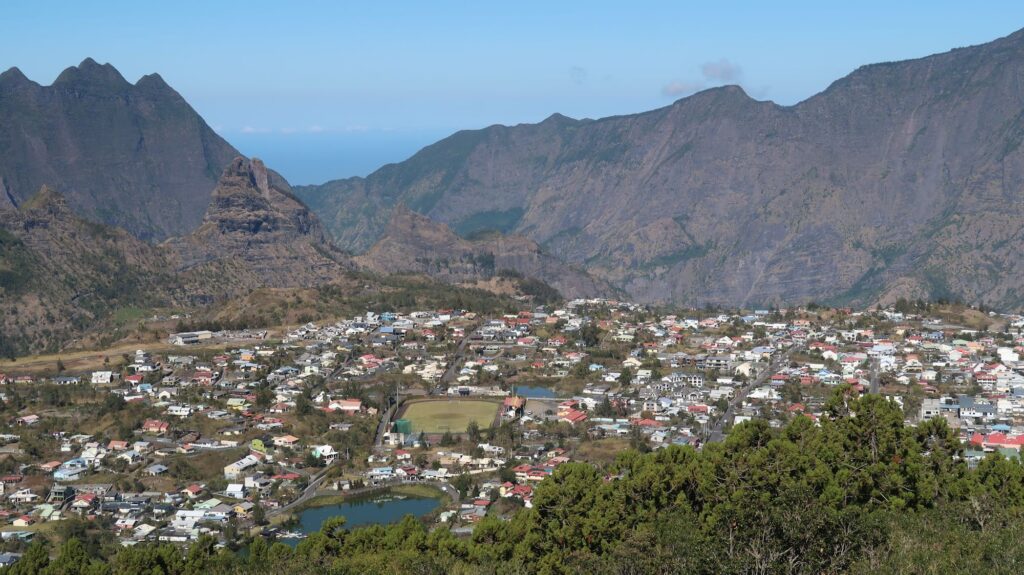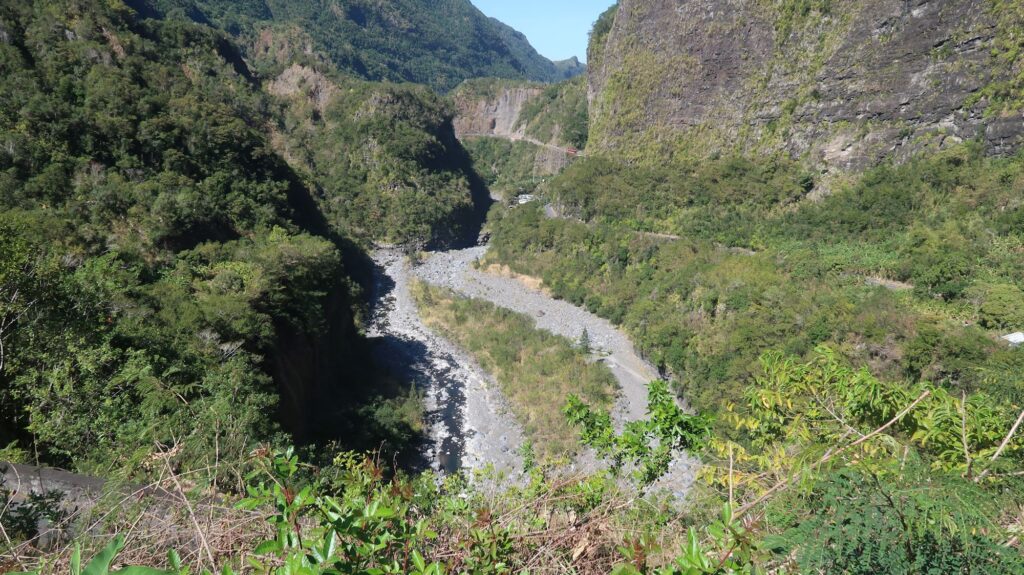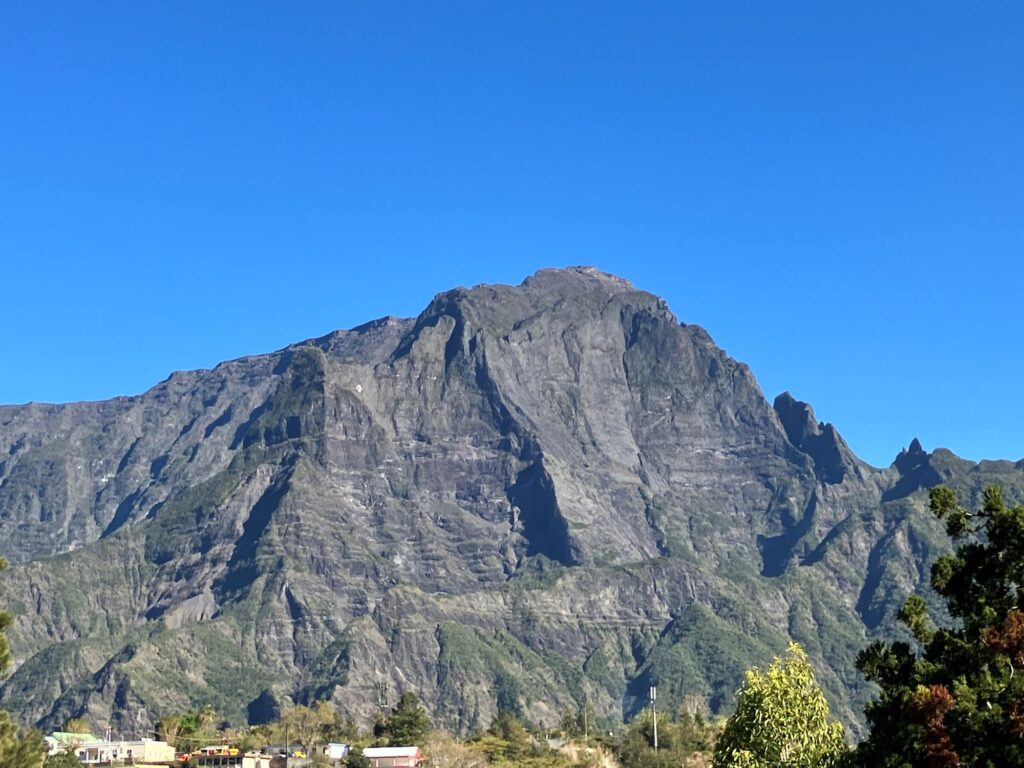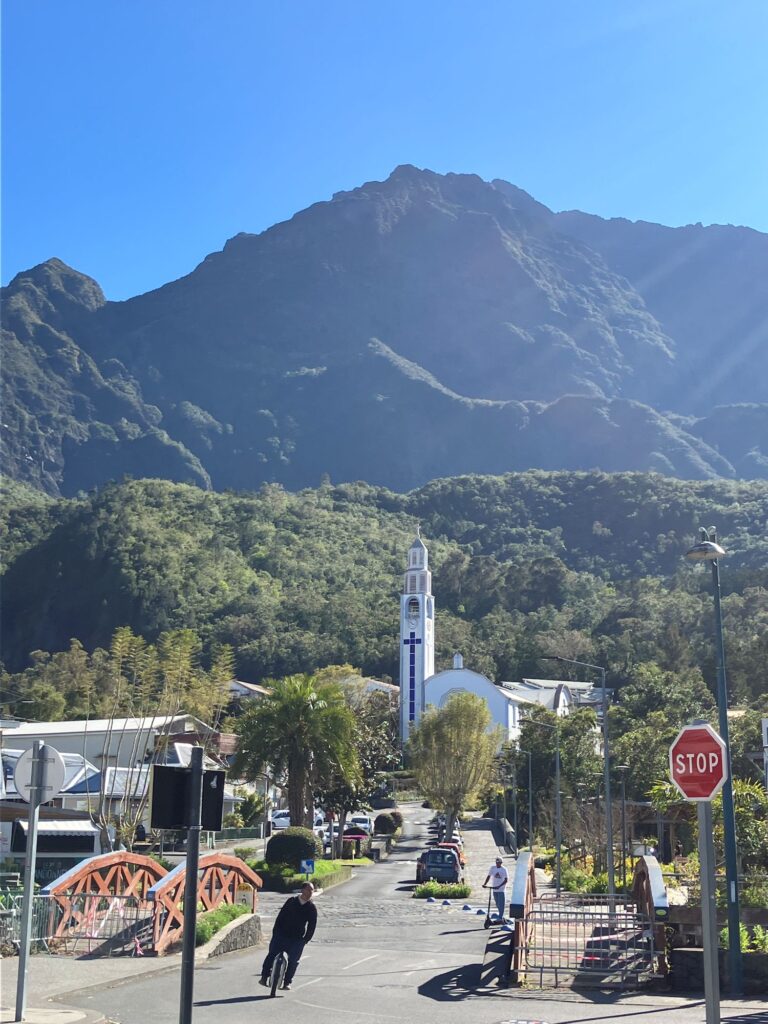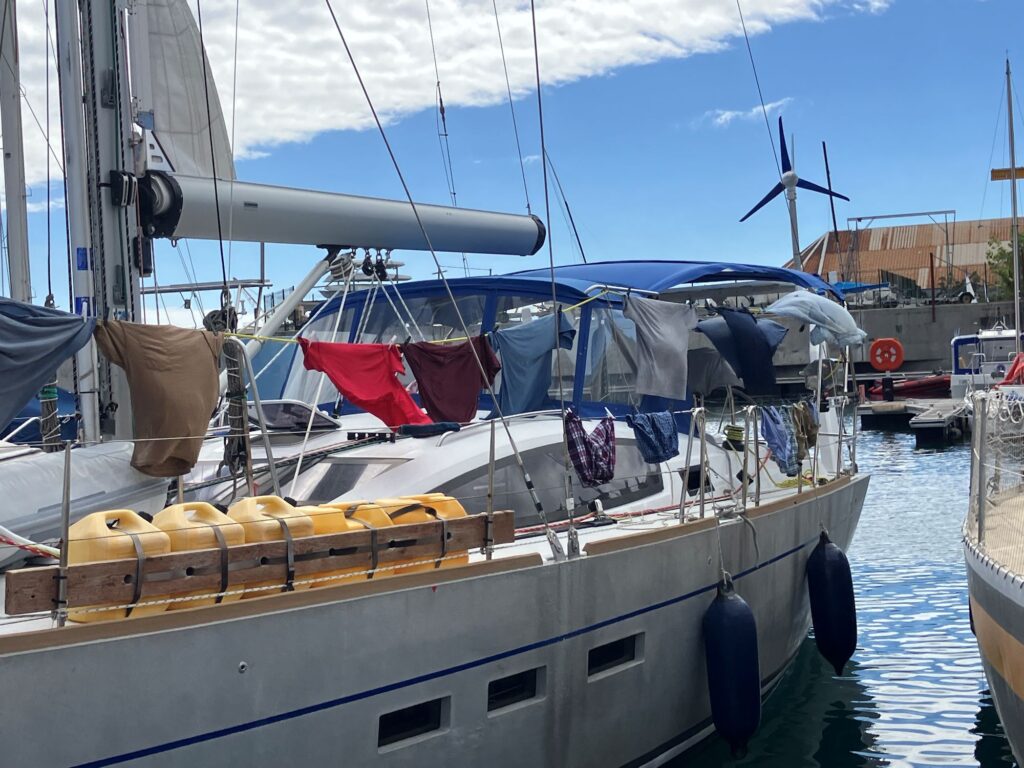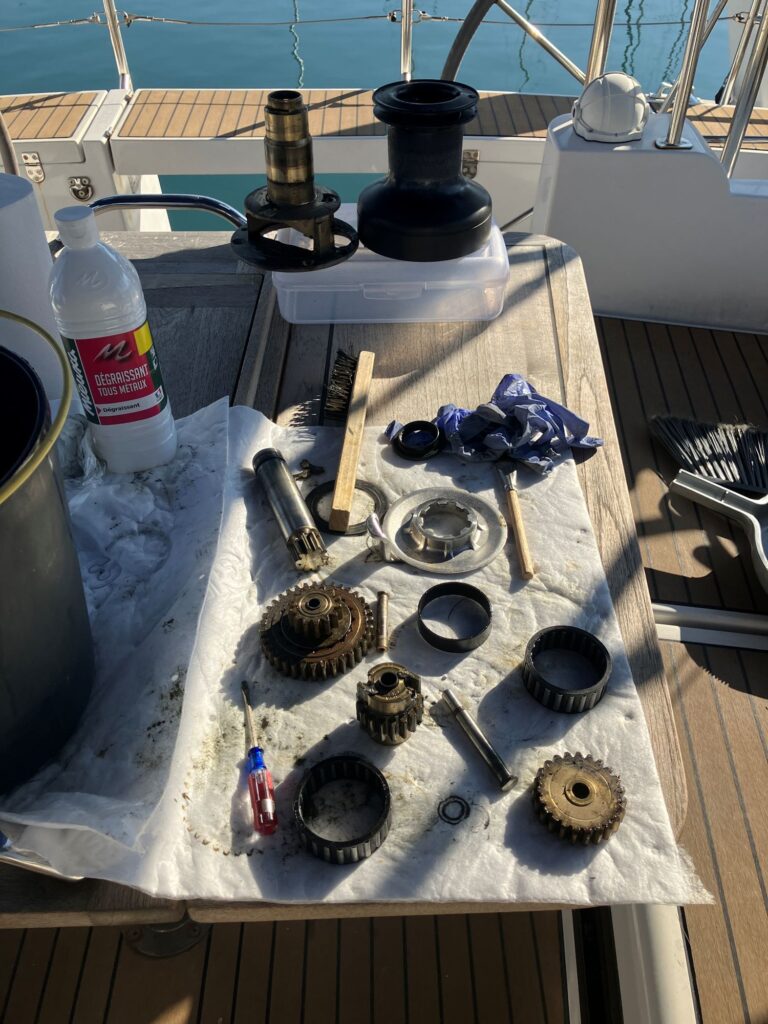After a 12 day passage from Reunion Island through some rapidly changing weather conditions and unexpected counter-currents, I arrived in Richards Bay, South Africa, at 1300z on August 20. I was able to make use of easterly winds blowing west on the north side of a string of high pressure systems (counterclockwise rotation in the Southern Hemisphere). I’m very glad to have completed this passage without having to contend with any southwest gales which were, in effect, blocked for a while by the high pressure systems. That changes tonight when a southwest gale will blow in over Richards Bay.
As I left Reunion Island I was treated to a pretty amazing concentration of humpback whales actively playing off the point of land at St-Gilles-les-Bains. As I approached heading southwest I saw clusters of boats out there and wondered what was going on. I soon found out. A parting gift as I left Reunion.
I’m currently tied to the concrete wall of the jetty where you must go first for Immigration procedures. The Custom building is a few miles away so a taxi ride was required this morning. There were strong crosswinds yesterday when I approached the jetty and unfortunately a big gust slammed Phywave into the wall and nicked up the aluminum hull a bit. I’ll see if I can get that cosmetic damage repaired while I’m here. I should have had all my fenders on that side of the boat.
This afternoon I’ll move across to a berth in the Zululand Yacht Club where all the visiting foreign boats go. The club seems more like a local social club, not just for boaters.
From here, the procedure to get around the coast of South Africa to Capetown in the face of periodic SW gales is well-known. Wait for a weather window 3 or more days long and incrementally move the boat to the next port along the coast. Typical stops are East London, Port Elizabeth, Mossel Bay, Kynsna, and others. I’ll be thinking of that in more detail when I embark on this passage in October.
I’ve mentioned to the few people I’ve met so far that this is not my first time in South Africa. They’re a bit astonished when I tell them I hitchhiked from Nairobi to Capetown and back again in 1975. Apartheid was still in place and Rhodesia hadn’t yet become Zimbabwe though it was under enormous economic and political pressure with international monetary sanctions in place. I have many stories from those days that I expect will come up as I hang out in the yacht club bar.
